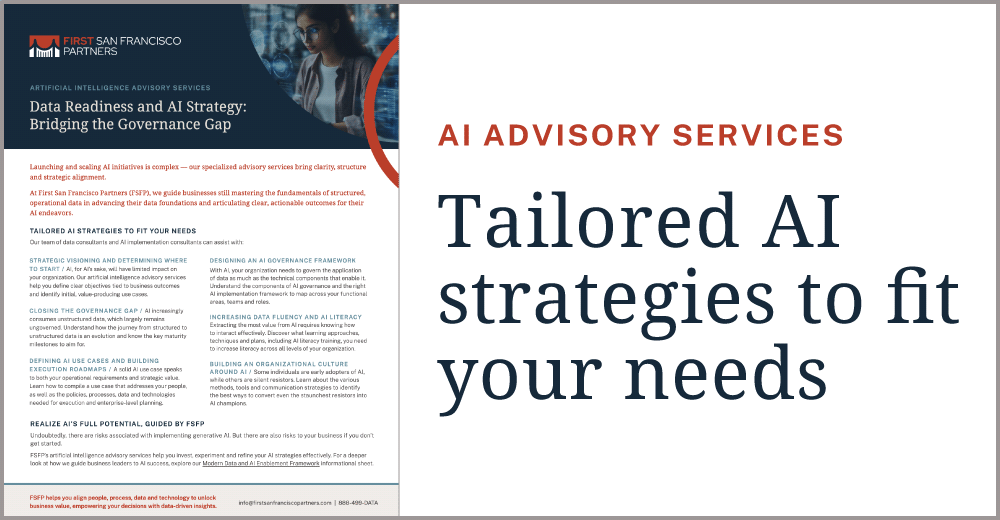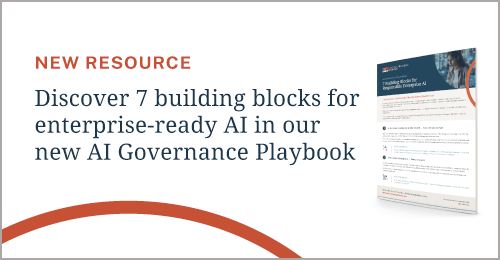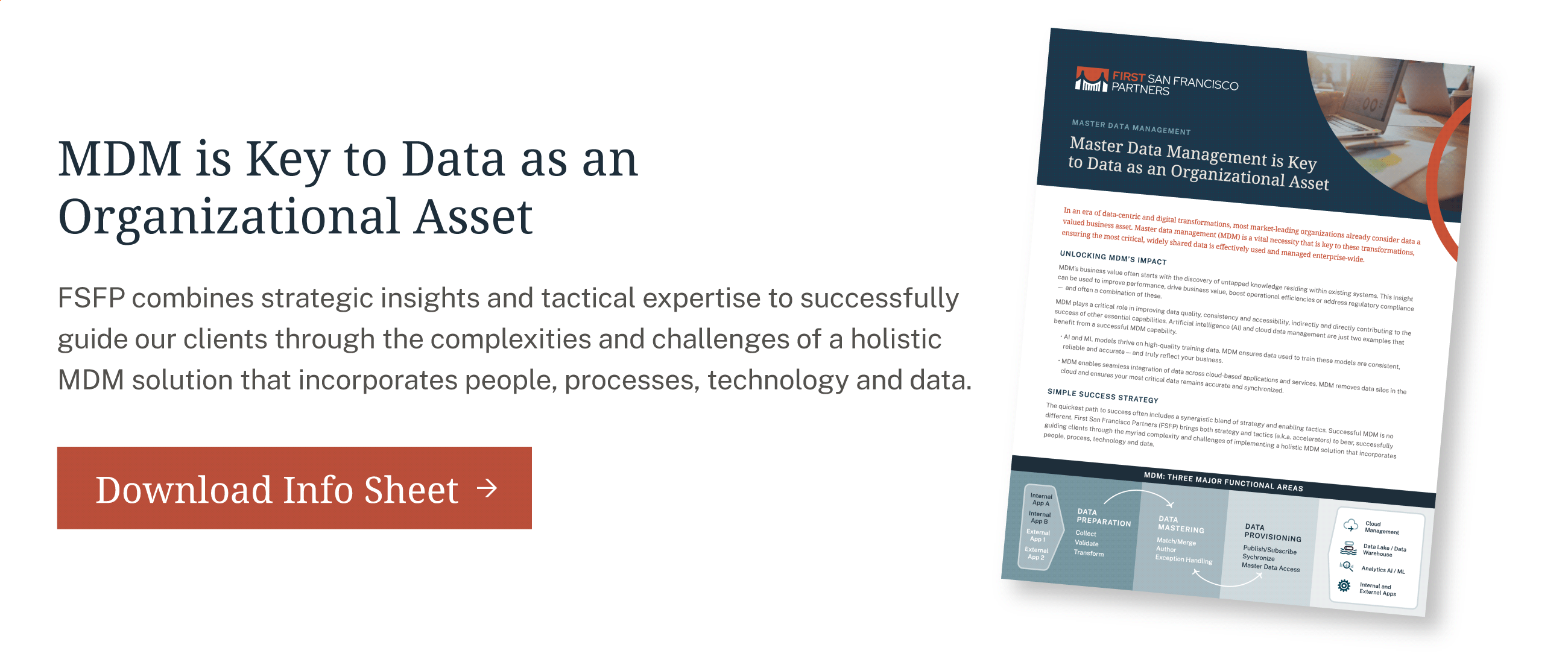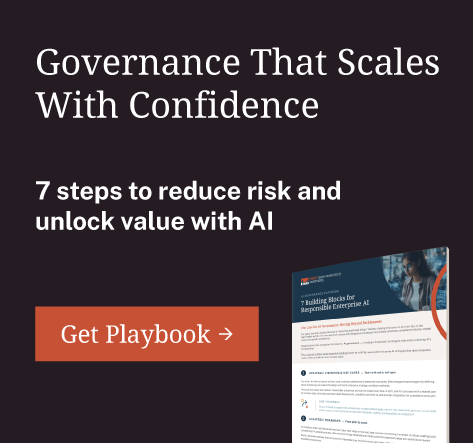Data management technology capabilities, and more specifically, data governance tools, have become a focal point for many companies across a multitude of industries in the last several years. Half of the respondents in Gartner's 2021 Emerging Technology Product Leader Survey invest in data and analytic technologies to grow their customer base. More than 40% do so to create new products and services and enhance existing products. However, a tool alone will not solve your data challenges.
With nearly every firm investing in data management tools, it can be hard to see this investment as a competitive differentiator. We’ve seen similar consequences when it comes to innovation before. The 2003 Harvard Business Review article “IT Doesn’t Matter” talks about the commoditization of information technology (IT). It states that once most inventions or new ways of doing things are established and adopted by an industry at large, then the advancement itself is no longer a competitive advantage for individual companies.
This concept is applied through the lens of IT and how the technology itself is no longer a differentiator for companies. This is a relatively common phenomenon. For example, electricity was once a revolutionary invention for nearly the entire world and how business was conducted; however, today, electricity would not be considered a company’s ”secret sauce” — everyone has it. The same thing can be seen today with data management technology capabilities.
Why Do Companies Need Data Management Capabilities?
First things first, what is a data management capability, and why do companies use them? The goals of establishing these data management capabilities can range from developing a reliable single source of truth to a complete view of the customer to understanding the flow of data. Other drivers can include determining where the data comes from, who has access to the data, if the data is compliant with privacy regulations and more.
Data management is the activities required to do the right things with your data (i.e., data storage and operations, data integration, data warehousing, data modeling and design, etc.). Data governance can be articulated as the processes and oversight to ensure that your organization is doing “the right things, right” with your data (i.e., data strategy, directives, stewardship, communication, change management, etc.).
All these data needs can be categorized into different capabilities of what First San Francisco Partners (FSFP) considers the data governance framework:
- Master Data Management (MDM) – to provide reliable, trusted, fit-for-purpose data that is consistent and accurate
- Metadata Management (MetaDM) – to provide access to high-quality, integrated, governed, useful information about critical enterprise data to enable data discovery and accelerate time to value for business priorities
- Data Quality (DQ) – to provide effective oversight to the information lifecycle of enterprise data with continuous measurement and monitoring
- Data Security/Privacy – to provide protection from unauthorized access of sensitive information
Data Governance-Specific Tools
It’s no secret there are top tools for each data management/data governance capability and recommended vendors for each area. Certain tools may perform better in different scenarios or have higher rankings on industry lists. Specific vendors may have certain capabilities that other vendors’ tools may not. But at the end of the day, the features of these tools are quite similar and can meet standard business requirements. Nearly any data management-specific tool can help support the delivery of these business needs.
Examples of data governance business needs and which capabilities facilitate them:
- Global view of enterprise customer = MDM
- Understand where data comes from = MetaDM
- Certified reporting = MetaDM + DQ
- Trusted data = DQ + MDM + MetaDM
Overall, many data needs can be categorized into similar requirements across industries and enterprises. Of course, they can differ across prioritized data domains or specific data management capabilities, but ultimately the problems and needs businesses face today are often not unique. Fundamentally, most needs fall within the value categories that FSFP aligns data governance to, such as cost, risk, operational efficiency and advanced automation enablement.
Data management tools help solve these more common data needs. For example, the need for customer MDM to help an organization better understand their current customers across the company, with the business objectives to grow revenue, reduce cost, create operational efficiencies, enable and support data privacy and regulatory needs. Across company and industry, these needs are essential requirements for company operations and to allow it to function properly. However, a tool alone does not guarantee a successful data program to satisfy these business needs.
Extending Governance Programs Beyond Tools
Even the best data management solutions on the market can’t guarantee successful data management capabilities or programs. This is why many data governance/data management initiatives fail, not from the incorrect selection or evaluation of a tool/vendor to meet the business’ need, but from the lack of support surrounding the tool in business alignment, data literacy, data culture adoption and other areas. For this reason, it is critical organizations understand the tool is not a singular solution to their data needs.
While the challenge driving the need for a data management solution may be relatively common, organizations are unique and their data cultures are too. Because of this, the strategy surrounding data management needs to be unique and demands the integration and alignment of more than just technology.
Successful data governance strategy, tactics and execution, including data management capabilities, must be aligned to company strategy and be enabled and accelerated by an active, effective, systemic and pervasive data culture. Data decisions and priorities must have a seat at the decision-making table to extract data’s full value for your organization. While a data management tool itself isn’t a competitive advantage, aligning the tool to fit your unique company culture is.
People and Processes Transform Tools
Like electricity or plumbing that came before it, data management tools are not strategic differentiators or viable competitive advantages for organizations. Almost every firm in every industry either has or is working on one of these initiatives (e.g., MDM, DQ, MetaDM) to support valuable data to answer business problems and achieve the ultimate goals of self-service analytics and digital transformation.
The mere existence of these tools and capabilities is not delivering competitive advantage or strategic guidance. The advantages and differentiators arise once there is true understanding and trust of the data and embedment of these tools in operational and analytic processes – only then can they enable an organization to achieve its goals.
Data management tools themselves may not ultimately matter in determining or accelerating strategic competitive advantages, but the culture surrounding data certainly does. The culture an organization establishes around how its data is handled, optimized and prioritized delivers a strategic edge and a collective confidence that data-driven decisions are the right ones.
The people side of data management helps deliver the true value of an organization’s data, not an automated workflow that calculates a data profiling score for a low business priority data element.
Data management tools require context — the business knowledge and understanding only we humans can provide and articulate — and it’s this combination that enables and accelerates the value of data in defining an organization’s competitive advantage.
Article contributed by Neil Martin
Array




